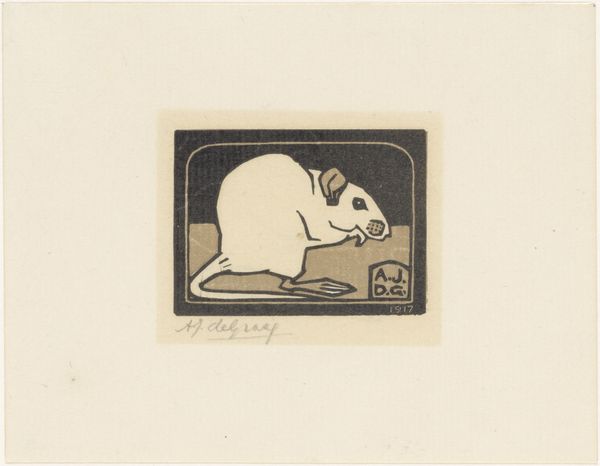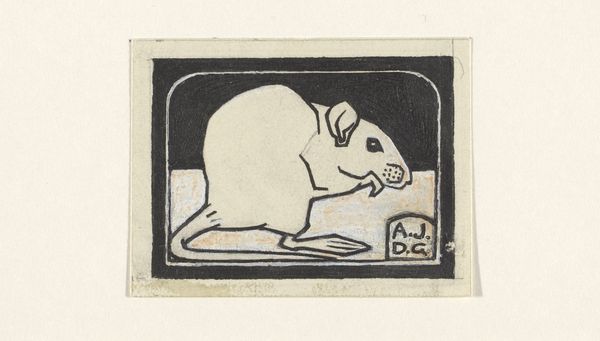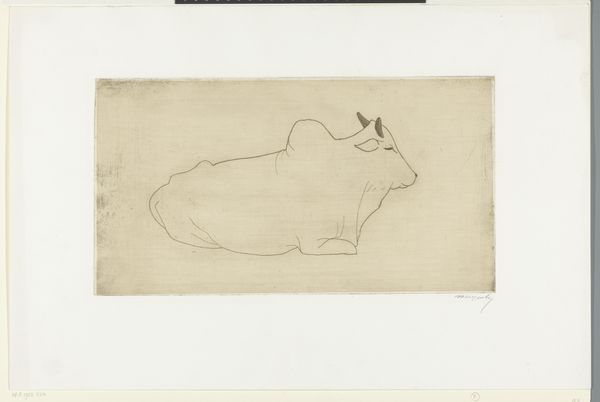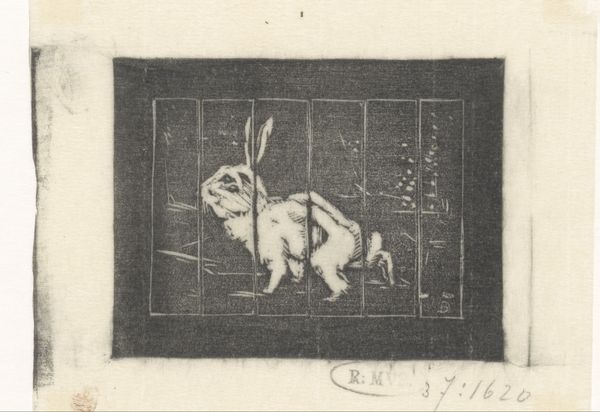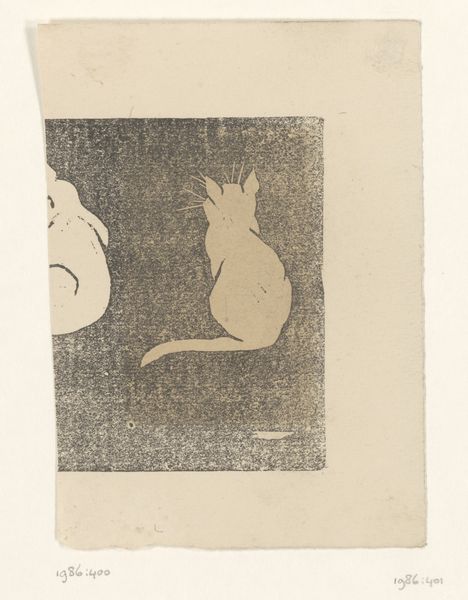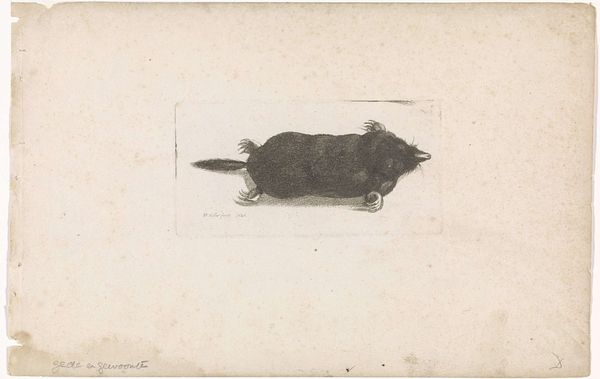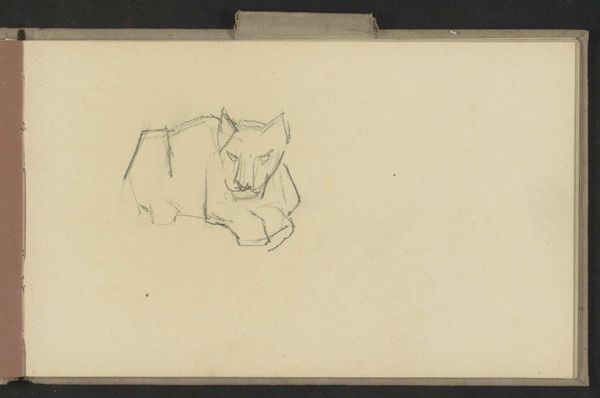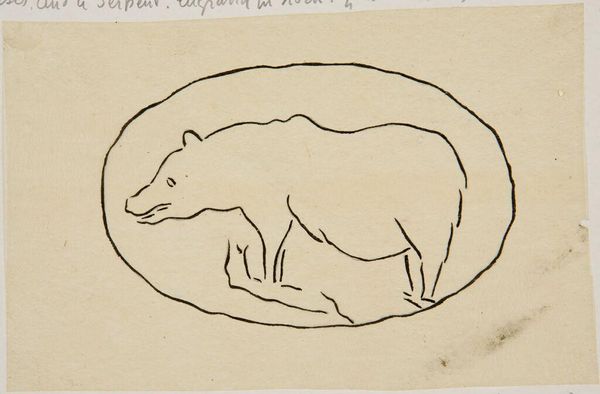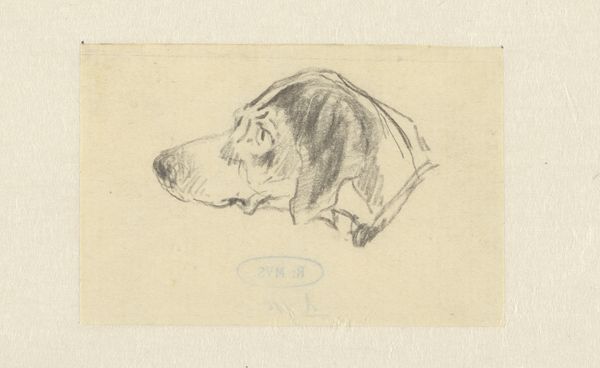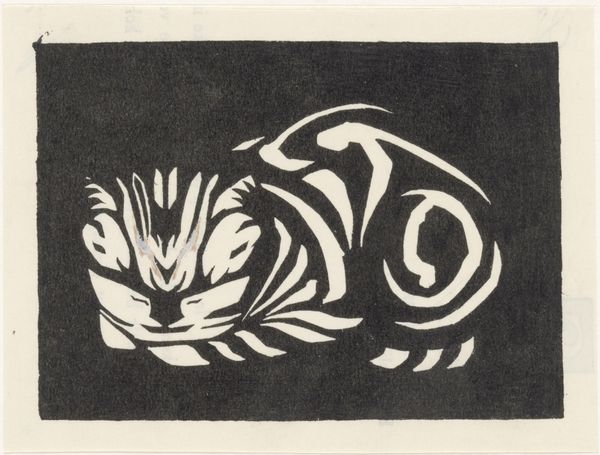
print, linocut, woodcut
#
animal
#
dutch-golden-age
# print
#
linocut
#
old engraving style
#
linocut print
#
geometric
#
woodcut
#
monochrome
Dimensions: height 49 mm, width 68 mm
Copyright: Rijks Museum: Open Domain
Curator: "Muis," or "Mouse," a 1917 linocut by Julie de Graag, currently residing at the Rijksmuseum, certainly commands attention with its stark simplicity. The figure is framed, creating a contained visual space. Editor: It strikes me immediately as bold, graphic, and unsettling, really. The high contrast flattens the subject. I'm very aware of its physical properties and of the labor involved in producing a print with such stark lines. Curator: Absolutely. The interplay of positive and negative space is quite striking. The artist manipulates the black ink not only to define the rodent, but to engage the viewer's perception of depth. Consider the formal implications of isolating the animal's silhouette within the rectangle. Editor: The deliberate choice of a linocut for this subject seems crucial. Linocuts allowed for the democratization of image-making, enabling prints to be made cheaply and circulated widely. Were these political pieces or made for the masses? Curator: Well, what intrigues me more is how Julie de Graag used this geometric reduction to present the figure, consider how the silhouette interacts with surrounding planes. Her aesthetic choices contribute greatly to a certain geometric formalism. Editor: The visible marks of the artist’s tools and labour invites a tangible connection with the print. Considering what was happening in Europe, during that year of 1917 - the First World War raging and resources were being stretched – one can imagine de Graag’s process was constrained by the availability of certain materials or techniques. Curator: But haven't the sharp, angular forms allowed her to express its essence—the essential rodent-ness of this mouse? It's not about pure imitation. The work transcends the basic material circumstances of its creation. It reaches beyond mere production. Editor: Perhaps both are true; on the one hand, a carefully considered aesthetic design, but always bound to a period in history and social reality where art becomes intrinsically tied to everyday life and conditions of its making. Curator: I’d argue De Graag offers a masterclass in reduction and signification, and the stark nature and use of contrasts serves its composition to an effect much larger than merely 'making do' in an era of strife. Editor: All that's said, one appreciates the hand that gave the artwork its being—even more knowing what difficulties surrounded its creation. Curator: Precisely, an artwork of precision and bold presence—its aesthetic echoes even resound today.
Comments
No comments
Be the first to comment and join the conversation on the ultimate creative platform.
